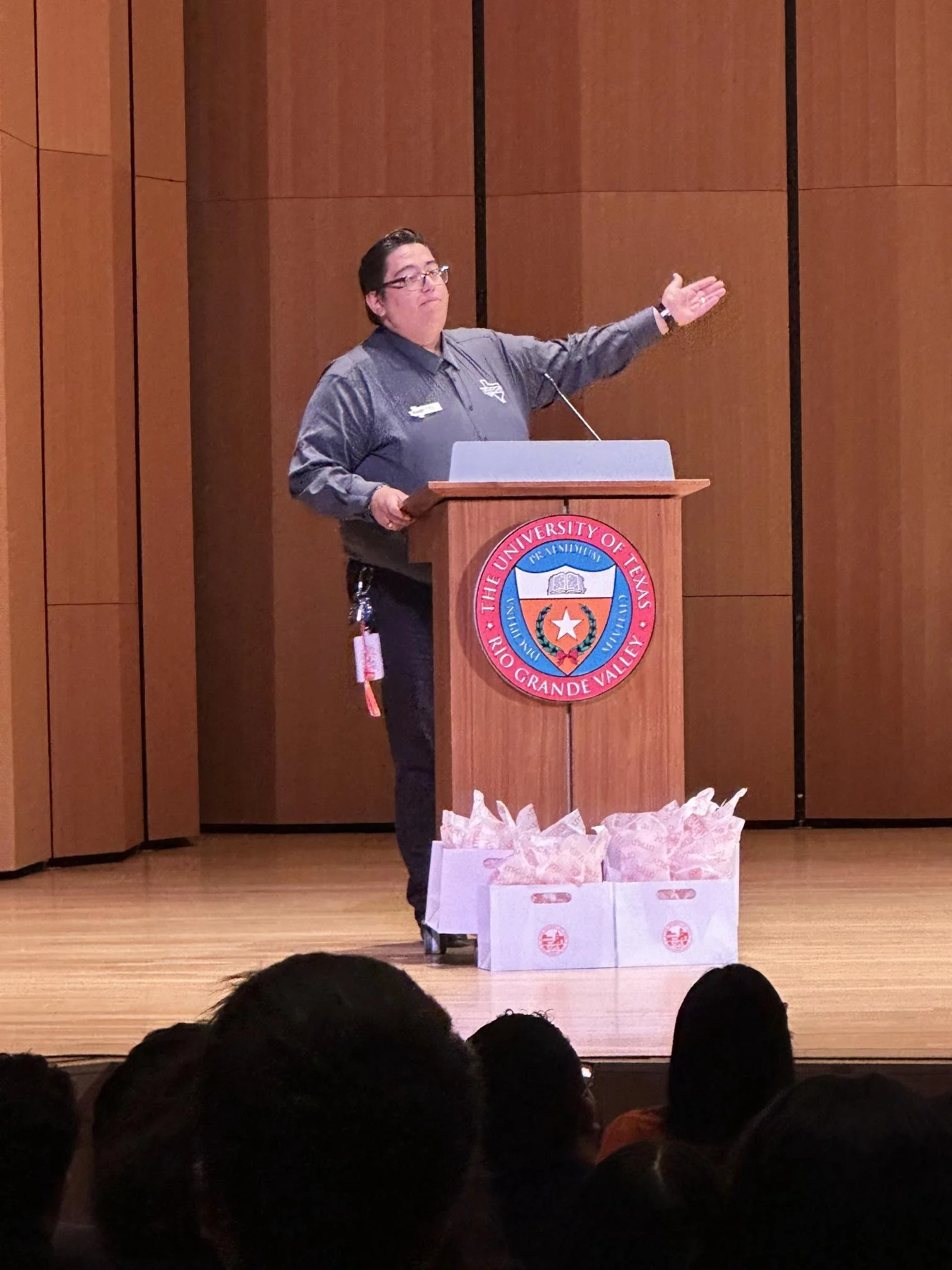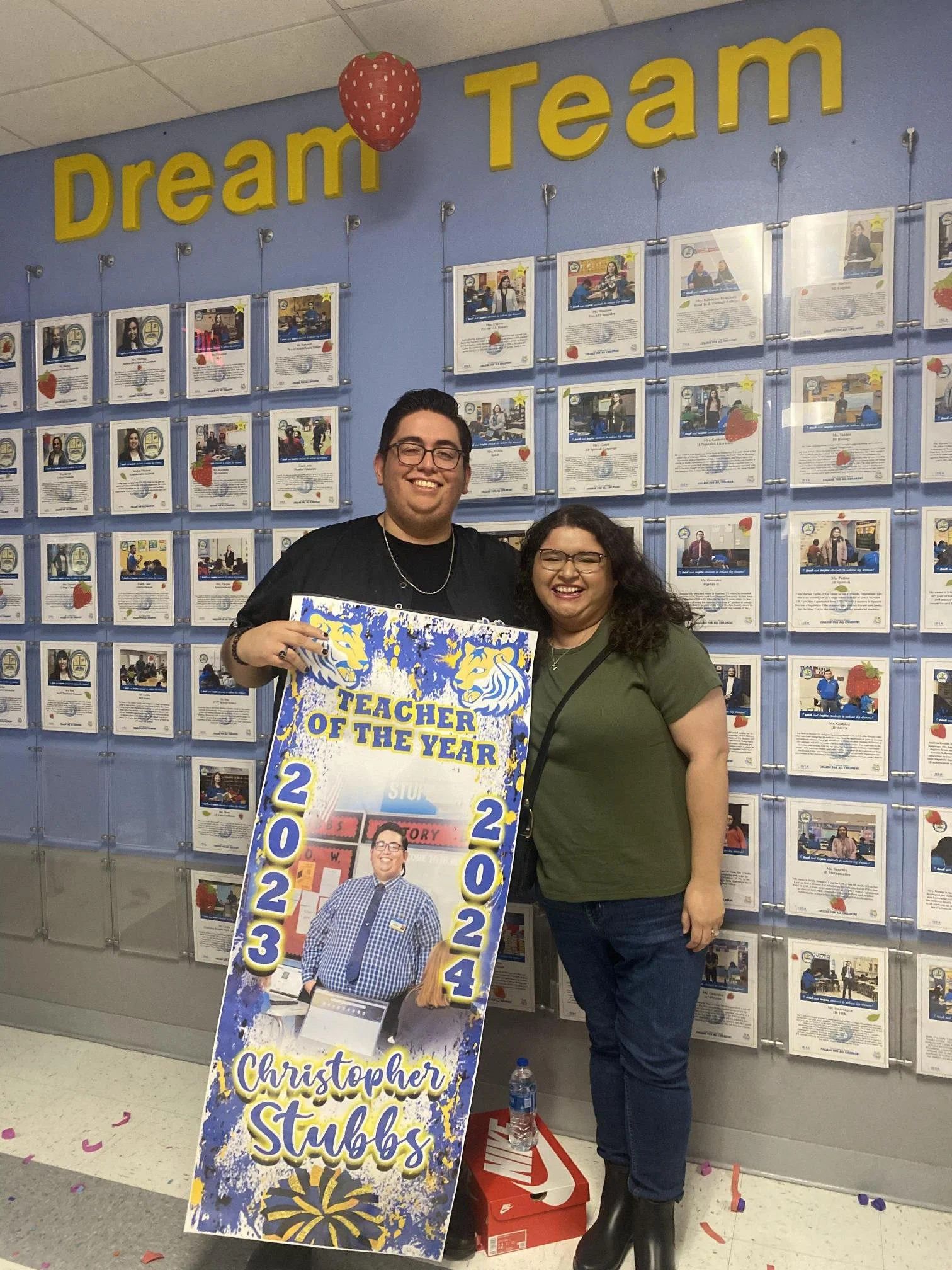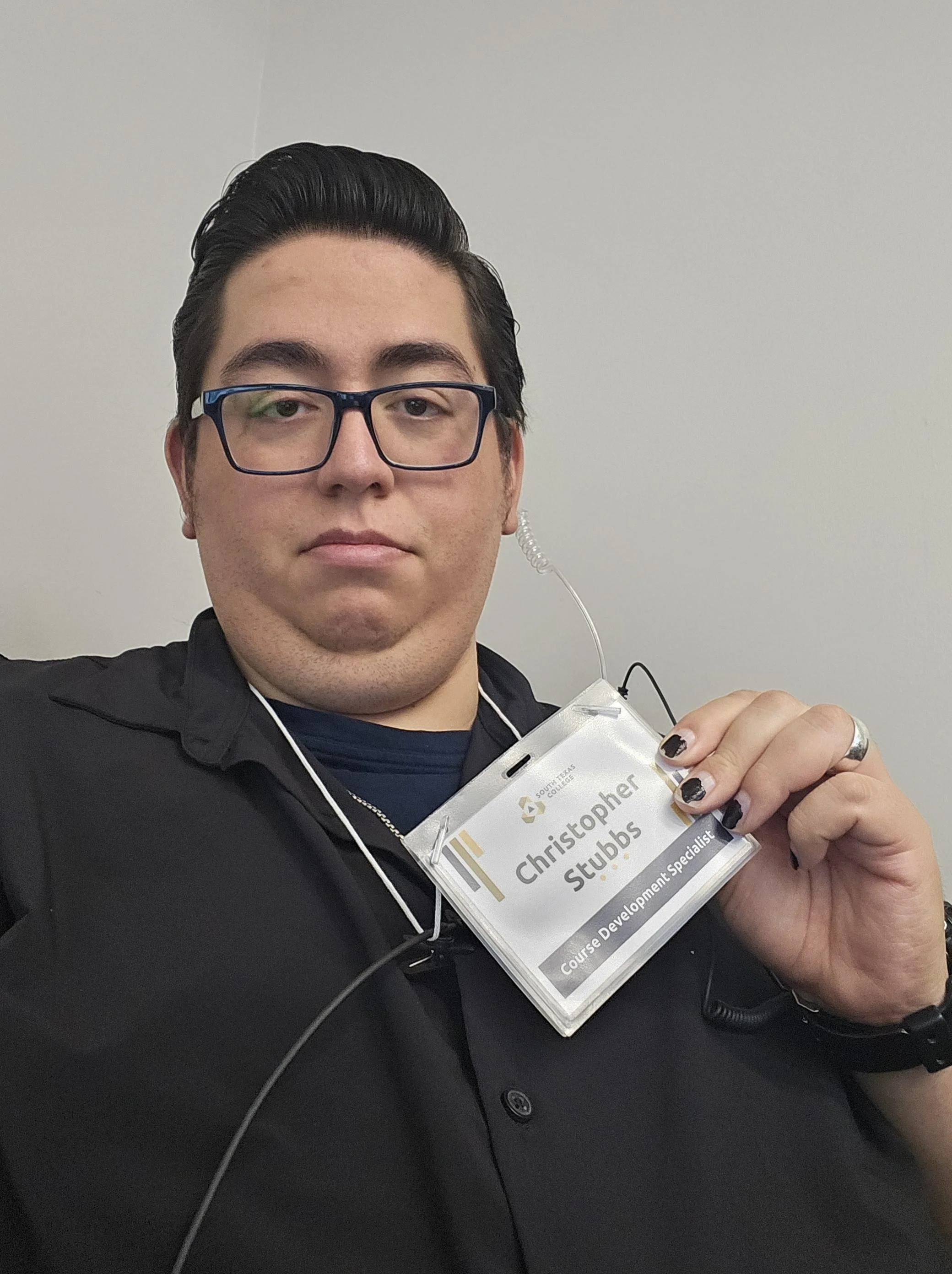Reflection Letter
Dear Educational Technology Faculty,
Before beginning the Educational Technology program, my professional background was primarily centered on secondary school instructional design and some limited faculty support. When I began this program I was working at South Texas College as a course development specialist. I was for the first time actually involved directly with course development, faculty training, and ensuring that course materials met institutional standards. As I quickly realized, my knowledge of emerging tools and systematic instructional design was limited. While I had experience creating lesson plans and assisting faculty with Blackboard navigation, I often felt underprepared when it came to integrating multimedia or aligning learning activities with measurable objectives.
In addition, my earlier career as a high school history teacher gave me initial insight into educational technology where I experimented with digital tools to enhance lessons, such as using online discussion boards, virtual field trips, or simple video clips to spark engagement. These experiences showed me the potential of technology to transform learning environments. However, they also highlighted my limitations. While I could incorporate tools into my teaching, I did not yet possess the depth of knowledge or skills needed to design technology-enhanced instruction strategically.
I entered this program with the goal of bridging that gap, shifting from surface-level technology use toward mastering intentional design, accessibility, and innovative strategies that would prepare me for more impactful roles in the field.
Throughout this program, my experiences have reshaped how I view educational technology and my role within it. One of the projects which I initially found to be overwhelming but eventually felt was transformative was in EDTC 6325: E-Learning Design Project Part 2. In this course, I developed a complete syllabus for a self-paced online training program at South Texas College, titled Creating Instructional Videos from Start to Finish. The project required me to think beyond individual lessons and design a full curriculum that scaffolded learning from scripting to publishing. Additionally, it was a project that directly impacted my work and helped me to understand the possibilities of integrating technology into curriculum planning. Furthermore, this artifact represented a key milestone because it demonstrated my growth in creating structured, standards-aligned, and accessible instructional design products that went beyond what I had been used to doing as a high school teacher.
Other assignments throughout the program reinforced this trajectory. For example, one of my favorite assignments was in EDTC 6323, where I created a multimedia instructional video on how to play the board game Risk. This project required me to apply Mayer’s Multimedia Principles by balancing narration, visuals, and on-screen text in a way that reduced cognitive overload. What once would have been a simple “record and upload” task became a thoughtful exercise in instructional sequencing and learner engagement and also helped me to understand how to better scaffold lessons to meet the needs of my students.
Another significant experience was conducting a Technology Needs Assessment Survey in EDTC 6342. This project taught me the value of data-driven decision-making in educational technology. Rather than assuming what faculty or students might need, as I unfortunately did often, I learned to design surveys, analyze responses, and use that evidence to propose realistic technology solutions. The process emphasized the importance of listening to the learning community before making changes.
Collaboration has also been a hallmark of my time in the program. Whether working on peer discussions, reviewing draft projects, or exchanging feedback, I learned that educational technology is not a solitary pursuit. The field thrives on collaboration between designers, faculty, administrators, and students. I want to shout out my course development team at STC for always being willing to give feedback and test things out with me.
Taken together, these experiences show how the program bridged theory and practice. Each course artifact built on the last, guiding me from technical skill-building to advanced design thinking. I now see myself not just as a course developer, but as someone capable of envisioning, designing, and implementing digital learning environments that transform the student experience.
Reflecting on my journey, several lessons stand out. First, I learned that effective educational technology design is not about tools but about intentionality. Before the program, I thought mastering tools like Canva or Blackboard Ultra was the goal. Through my coursework, I realized that tools are only meaningful when aligned with sound pedagogy, accessibility, and measurable outcomes.
A second lesson is the importance of accessibility as a design philosophy, not just a checklist. Early in my career, I treated captions, alt-text, and formatting as compliance tasks. This I would say was a fundamental misunderstanding of the necessity of accessibility that is far too common in public education. Through the program, I’ve come to view accessibility as a fundamental part of creating equitable learning opportunities. For example, in my instructional video syllabus, I integrated accessibility checkpoints at each stage, captioning videos, scripting narration, and structuring modules so that all learners, regardless of background, could fully participate.
A third lesson involves the role of feedback, both human and AI-assisted, in the design process. Peer feedback helped me refine scripts and video projects, while AI tools provided quick checks for clarity and engagement. I now recognize feedback as essential to iterative design, not just a final step before submission.
If I could give advice to my past self, it would be to embrace experimentation earlier. I was hesitant at first to try new tools or redesign assignments from scratch. I now see that mistakes and revisions are part of the process, not failures. I would also advise future students in this program to save and reflect on each artifact they create. These projects are not just assignments but milestones that document growth and build a portfolio of professional expertise.
The synthesis of these lessons is clear: educational technology requires a balance of creativity, technical skill, and empathy. It is about designing for people first, technology second. This mindset will guide me moving forward.
Looking ahead, my professional goals center on leveraging educational technology to improve teaching and learning at both the institutional and community levels. In the immediate future, I plan to apply the knowledge gained in this program to strengthen staff development initiatives at my new home, the University of Texas Rio Grande Valley. By creating training modules, video tutorials, and accessible resources, I hope to empower staff to confidently integrate technology into their professional toolset.
In the longer term, I envision myself someday leading larger-scale projects that shape institutional approaches to online learning. To be completely honest, my goals have shifted since I began this program. I moved from a curriculum development role into a leadership position at a new institution and in a different department. Yet my love for education, and for creating learner-centered experiences, still holds a powerful place in my heart. I know that one day I will meander my way back into a classroom. When that time comes, I will carry with me the knowledge and skills I gained here to inform my teaching and advance the cause of meaningful, widespread technology integration in education.
Ultimately, I hope that what I learned here can help myself and others to help build systems where technology amplifies human connection, fosters creativity, and ensures that education remains accessible and meaningful for all learners.
To my professors, I want to say thank you. I could not have made it through this program without your guidance and constant support. Your wisdom and leadership provided clarity and reassurance as I navigated both personal challenges and professional transitions. Although this isn’t addressed to them, I would like to acknowledge my classmates and now friends; for you I am equally grateful. The camaraderie we built along the way made this journey a life changing experience, and I hope we can continue to work together in the future.
Finally, a special thank you to Dr. Corbeil for the opportunity to take part in this program, and to all the faculty and staff in Educational Technology. You are changing the world!



